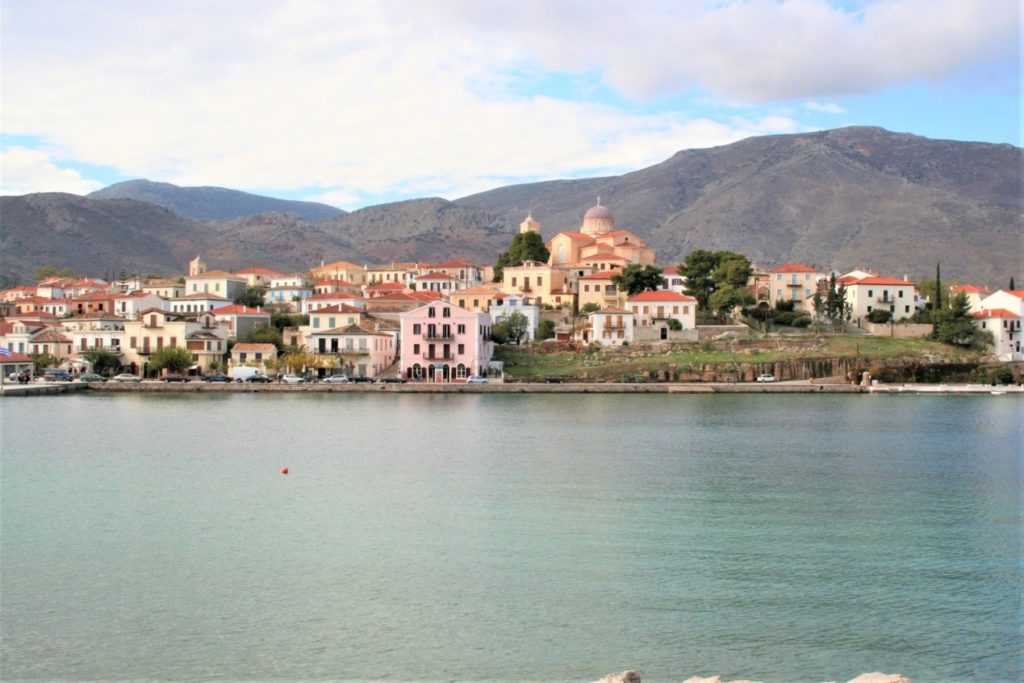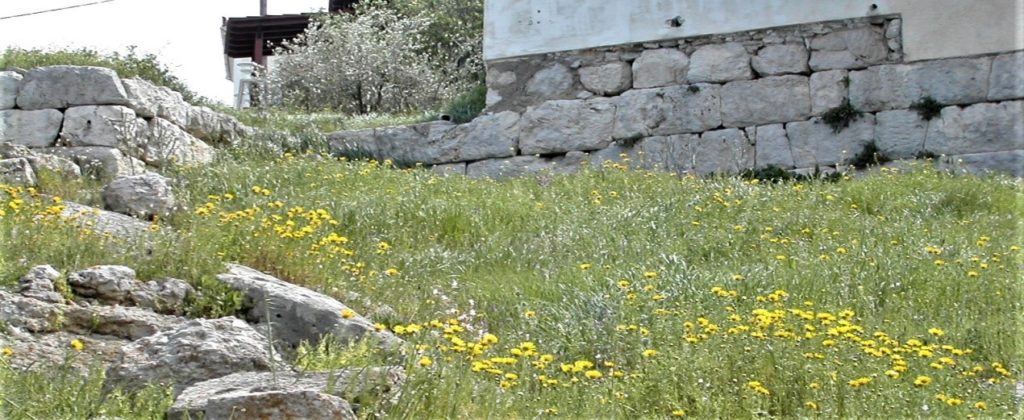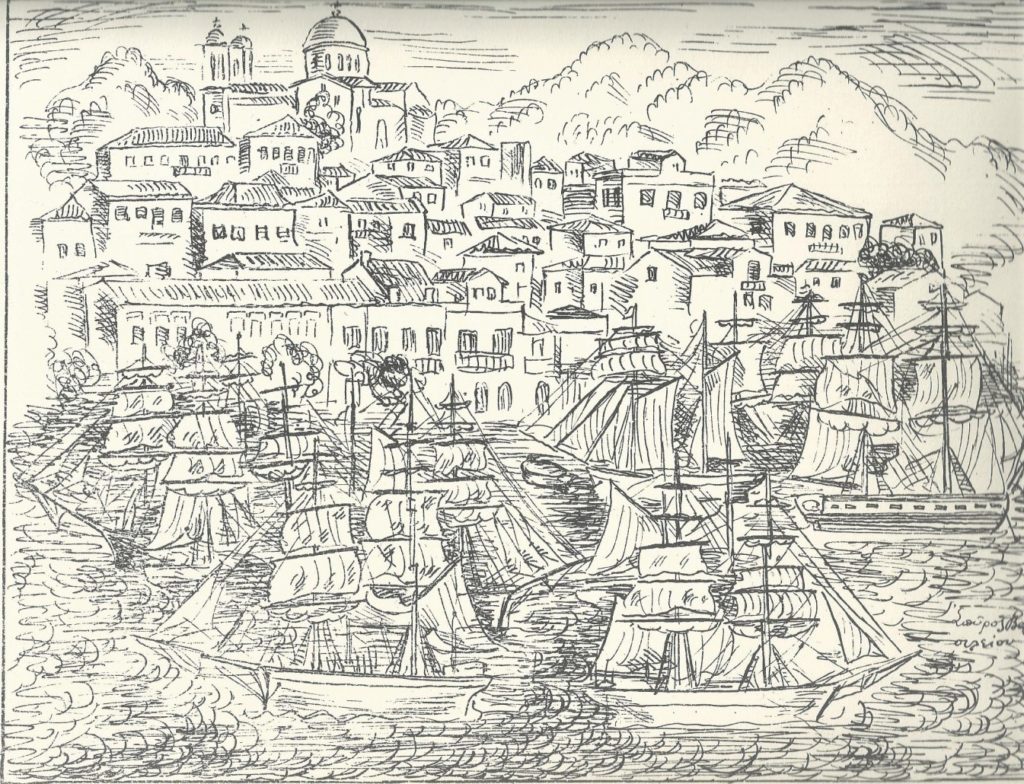The writer Eva Vlami Vlami (1910-1976) begins her book "Galaxidi" (Estia Publications 1947), with a poetic but also faithful description of the place:
Galaxidi is located in the mainland side of the Corinthian bay, deeply buried in Chrisaic waters, as they have named the sea that embraces it. It is surrounded by high mountains, which give it serenity and security. Actually it is so placed that makes you think that it was God's will that Galaxidi became a seafaring community. The village in the very old days was built on the mountainside. But one of its citizens wished one day to go down to play in the sea, which he saw stretching far and wide. Next, another followed, and another, and thus the first families were gathered near the sea.
The main section of the town is built on the rocky peninsular between the two coves and the highest point is crowned by the imposing church of Agios Nikolaos. Ruins of the ancient wall that encircled the old settlement are visible in many sites.
Indeed in the very old days, people lived in the surrounding hills and mountains. Wherever you walk in the mountains around Galaxidi, you find their traces. Archaeologists have excavated ancient tombs with abundant votive objects on the mountain slope.
They must have built their town, Chaleion, on the mountainside above today's Galaxidi, near the church of Agios Vlassis, but they also spread out on the plains and foothills of the neighbouring hills. However, it was as if fate had tied the inhabitants to the sea from an early age.
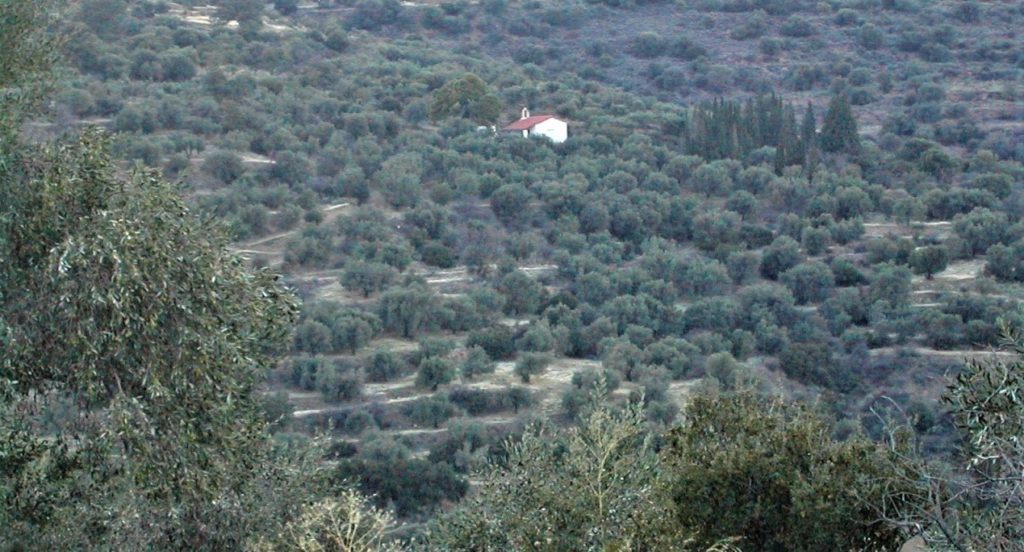
Area of Agios Vlassis where the ancient Chaleion must have been
From wherever they looked, the ancient inhabitants could see the wide sea with the beaches and bays on the opposite shore.
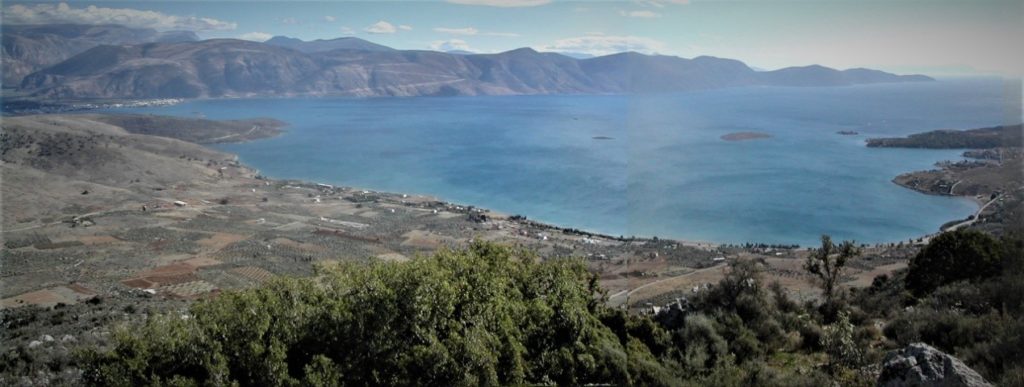
The view from ancient Chaleion
They must have built boats to fish and get around the islands and little by little with bigger boats they dared out to the big seas. They traded with other parts of Greece and brought the hard rock, obsidian, from Milos and other Aegean islands to make blades for weapons and tools. An amphora that was used five thousand years ago was found in the bottom of the sea probably from a ship that had sunk.
On the small rocky peninsula between the two ports, the ancients finally decided to build a great fortress for their city of Chaleion, which has survived in many parts to this day.
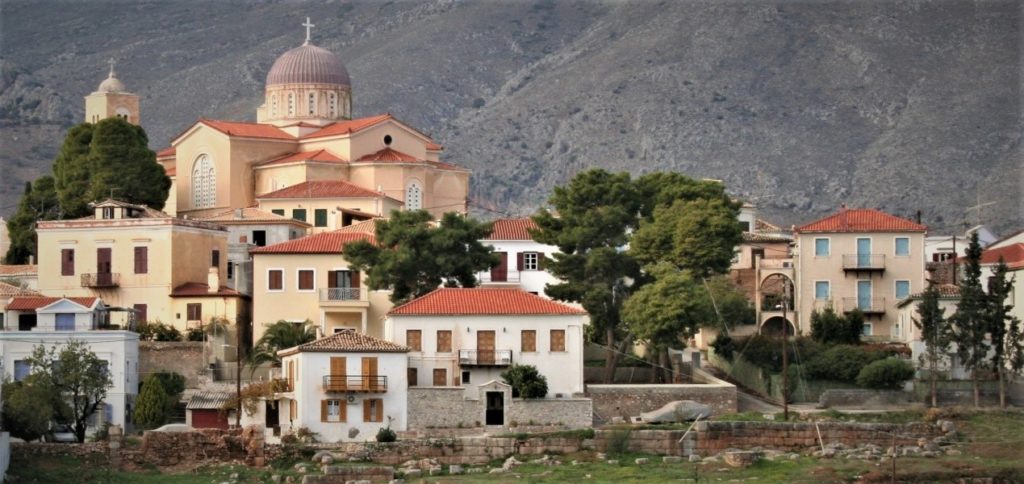
The remains of the ancient wall at the bottom of the image
Here and on the surrounding islands, the history of the place was written until our days. In the early Byzantine years, when foreign barbarians came from the land, the people sailed to the islands where they found shelter and must have lived there for a long time. Greek and foreign archaeologists have found traces of their passage on all the islets.
However raids and earthquakes must have devastated the place because the inhabitants forgot the name Chaleion, and the subsequent settlement was called Galaxidi..
On the ridge of the mountain above Galaxidi and among the ruins of the ancient settlements is the Byzantine Monastery of the Transfiguration of Christ the Saviour.
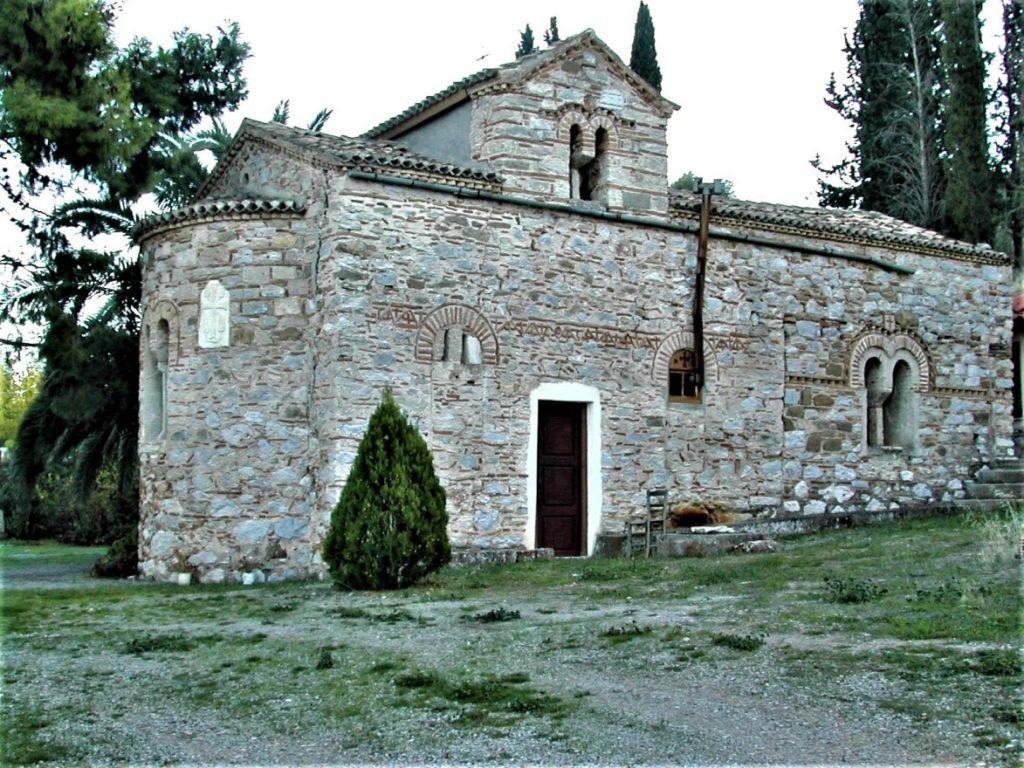
The Church of the Monastery of Christ the Saviour
The monk Euthymios, a restless man proud of his country, toiled many nights reading old books and documents kept in the monastery, to write a Chronicle covering the history of the place from the 10th to the 18th century.
In 1864, in a crypt of the ruined monastery, Galaxidiot, Konstantinos Sathas, found the hidden manuscript of this Chronicle that narrates the passions and glories of the maritime state that is constantly being destroyed and reborn. It describes raids by Bulgarians, Franks, Corsairs and pirates and events during the years of Ottoman rule.
The last adventure narrated by the Chronicle is the massacre and destruction of Galaxidi by the terrible pirate , Durajibei, (around 1660).
"Those who remained Galaxidiotes took to the mountains, the hillsides and the dells and built huts here and there, and the place where they were enslaved is called Paleogalaxido and they remained hapless for thirteen years."
On this land, all stone and thorns, they tried to cultivate and feed their livestock so that the few families that were left could live.
When they returned to their homes, they started slowly rebuilding it and building ships again. The revolution of '21 found them prosperous and strong on land and sea, and they gave all to the struggle. With armed ships they patrolled the Corinthian sea and for that the Turks destroyed Galaxidi three times.
The liberation found Galaxidi deserted and destroyed but soon was rebuilt. Shipyards established around the two ports and commercial voyages started again. Galaxidi quickly became a great naval power.
"You could count five hundred ships' flags and inhabitants six thousand and more."
From the book of the painter Spyros Vassiliou, Galaxidiotika Karavia.
Reprinted by Goni Publications, 1996
Sketches of Spyros Vassiliou with many sailboats in the harbor.
From the book of the painter Galaxidiotika Karavia. Reprinted by Goni Publications 1996
The life of the small maritime state was marked by the adventure of the journey with the wooden sailing ships, the dangers of the sea but also the profits they brought back. This is how the mansions that make Galaxidi special were made.
They also built the great church on the highest peak of their city, Ai Nikola. His holy iconostasis, a masterpiece of wood carving art, is one of the most elaborate in Greece. The great craftsman sculpted a multitude of sacred representations and figures. Worked to the smallest corner, it is filled with figures of Saints and Angels, flowers, fruits, nuts, mythical animals, reptiles and many other ornaments.
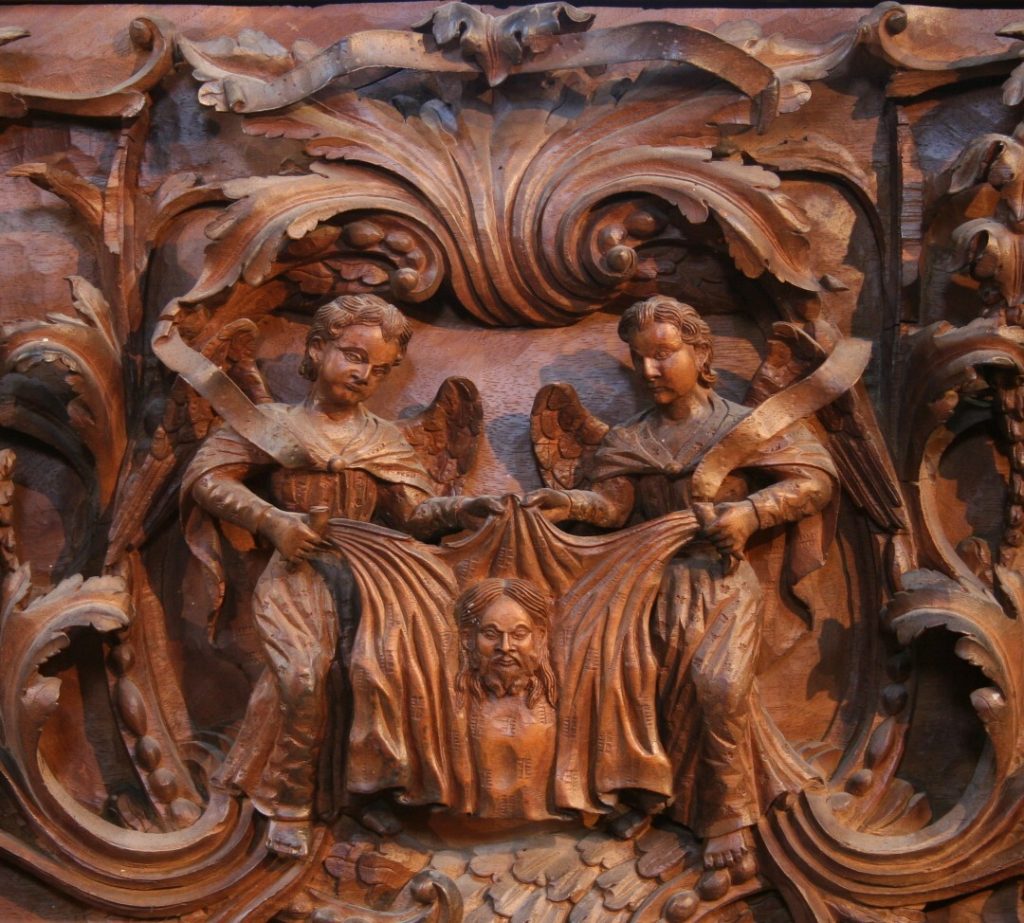
From the iconostasis of Agios Nikolaos
However, in the last decade of the 19th century in Galaxidi the era of sailing ships ends as the age of steam had arrived.
Shipbuilding stopped and decline begins at a rapid pace.
Many Galaxidians tried, as early as 1883, to adapt to the new requirements and bought steamships. However, the financial size, the difficulty of the independent captain-owner of accepting to form companies and the new trade sea routes were the reasons why Galaxidi ceased to have a presence in Greek commercial shipping in the 20th century.
"The steam with the strange and ugly vessels that put out black and thick smoke finished Galaxidi. Passionate seafarers, the Galaxidian captains were not able to become ship- owners. This is another job" , as the painter Spyros Vassiliou says, "Τhere was a time when Galaxidi counted a few steamships, but they did not succeed either. So the bay was deserted again. Not a single ship was left behind, not empty or damaged in port. Honor to the Galaxiditian ships that were lost."
However, Galaxidiotes continued to work in Greek-owned ships to this day, and thus the maritime tradition is preserved.
And then the Naval Gallery was founded. The people of Galaxidi took the portraits of the ships from the homes, took out their old memorabilia from the chests and delivered them to their Mayor, the Doctor Efthimios Vlamis.

Watercolour painting of a Galaxidian sailing ship from the Museum's collection
"Thus - as Eva Vlami writes - inside the Naval Gallery of Galaxidi you see the old days brought to life having lifted the tombstone that planted it and now every vessel that came to rest in its arms is happy. And it is a joy to flaunt all these floats in the brightly lit hall, like in a church. All around on counters are nautical paraphernalia. Among them are four girls, figures cut from the prows of old ships".
And then came"The Union of Young Galaxidans"to collect the antiquities in the town, to save them from getting lost and build the archaeological collection that was enriched by the small excavations in the area. So today the Nautical and Historical Museum of Galaxidi is the pride of the town.
Galaxidi was listed as a traditional settlement in 1978 and in recent years it has developed into one of the most picturesque Greek locations and attracts many visitors throughout the year.
Bibliography
- Spyros Vassiliou. Galaxiedian Ships. Reprint, Goni Publications 1996.
- Eva Vlami, Galaxidi - The fate of a naval state Publications: Estia, Athens 1982.
- Thanasis Gonis, Journey to Galaxidi, Goni Publications, Athens 1999
- Efthimios Gourgouris, The Galaxidi the age of the ships, volumes 3, 2nd Edition, Association of Galaxidiots, Athens 2001
- Efthymiou Ieromonachou, Chronicle of Galaxidi, Akritas Publications, 2nd Edition, Athens 2004, Available: En Plo Publications.
- Adonis K. Kyrou, Galaxidi in the "Dark" Early Byzantine Ages p.:79-85, Galaxidi from Antiquity to Today, Athens 2003
- Efi Baziotopoulou - Panos Valavanis "Movements" of Galaxidi in Antiquity, pp.11-26: Galaxidi from Antiquity to Today, Athens 2003.
- Anastasios I. Skiadas, Galaxidi, An Ancient Maritime State, Athens 1999
- Lucien Lerat: The Esperian Locrians, I Topography and Ruins, II History, Institutions, Portraiture. Translated from French to Greek and published by the Municipal Library of Amfissa. Amfissa 2008.


